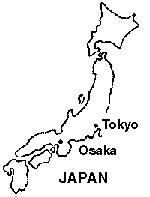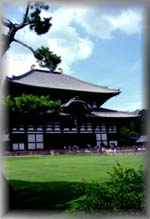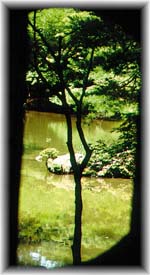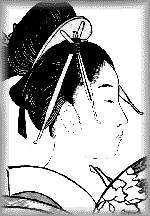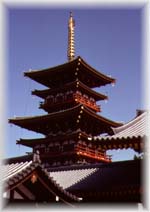an.... Invitation to Kyoto's gardens
http://www.greenkiwi.co.nz/footprints/frames/jp_print.htm
PRINT VERSION revision29jan07

We run this tour according to demand.
At present (Jan07) we do not have any Japan tour scheduled.
Please make contact if you are interested.
eas of raked sand and azalea mountains. Rocks representing the world, and ponds that stretch from one universe to the other.
Japan’s gardens are paradoxical; tiny and opulent, refined and huge, simple and complex, easy to see yet hard to grasp. The degree of complexity fascinated me while I lived in Japan. Gardens as a metaphor for the community within which I lived, and as entities themselves, were a constant revelation. Artistic expression through the use of topiary, rock work and a knowledge of how people move and interact with their environment was something totally new and fascinating to me.
In springtime all the elements combine to make Japan’s gardens fresh and alive. Cherry blossoms, azalea blooms, irises, baby bamboo shoots and the fresh green foliage of Japan’s deciduous trees breaking out of winter’s austere boughs make for one of the significant changes of the year.
To be able to share my interest and enthusiasm for Japan and it’s gardens with others, is really enjoyable, especially in the spring season.
The General Plan
s to visit the famous, and some of the less famous gardens of Kyoto, Nara and Osaka during spring. We have run this tour on successive years but from 1999 will offer it only on special request. We shall see and learn about the various garden styles of these ancient cities.
Osaka's, Kansai International airport (arguably the most architecturally spectacular of the world's new airports), is our gateway to Japan. Nara (home to Japan's largest bronze statue),
Kyoto (Japan’s cultural capital) and Mount Koya (famous for it's cedar temple-lodges) also feature on our itinerary.

A brief history of Japanese Gardens

apan was described as having always been fashionable by Fosco Maraini and this observation is still true today.
From the Shinden gardens of the Heian period ( 894 - 1185) with their Fishing and Spring pavilions and idealised versions of nature, to the ultra modern concrete water sculptures of Ando Tadao, Japan’s gardens have and will always be slightly outside the main stream. By visiting the ‘Paradise’ gardens of the late Heian period like Byodo-in in Kyoto, and the more classically recognised Karesansui (or landscape without plants or water) style typified by Ryoan-ji, you will get a feel for what it was that helped create the Japanese garden aesthetic. The Silver and Gold pavilions, so often depicted in Japanese calendars, are even more thought provoking seen in context. Originally parts of large villa complexes, the former was a synthesis of the Shinden, Paradise and Zen garden styles; the latter a more private place influenced by the rising importance of the tea ceremony and flower arranging.
Kobori Enshu, perhaps the best known garden designer outside Japan. He worked in the Edo period which followed construction of the Silver and Gold pavilions. The Hojo garden at Nanzen-ji is a Sung-painting-inspired dry landscape by Enshu. The same temple’s Konchi-in, a contemporary construction of the Hojo’s, exhibits what became Enshu’s trade mark, topiary. Konchi-in has clipped hedge mountains rather than what had previously been the norm, large and expensive rocks.
As Japan’s political strength moved from the priests to the warriors, so to did the style of garden construction change. Instead of being a place of contemplation, the garden became a show piece. Sambo-in is a fine example, constructed in 1598 with 800 rocks. One of these rocks was the equivalent of sufficient rice to feed one thousand men for a year.
However, it was not the flagrant display of wealth through gardens which endured into the following centuries, but another style of garden which was developing at the same time. This style had seen a slow progression from the early fifteenth century.
It was the garden associated with tea and it’s preparation. The tea ceremony and it’s garden stressed simplicity, not extravagance and these qualities have endured. It’s central tenant is mitate or re-seeing, an awareness of beauty in unexpected forms. Gardens were constructed with these ideas in mind, to help the person passing through them move from the formal world into the informal sanctuary of the tea ceremony.
At that time, the Roji (tea-style) garden associated with the tea ceremony was a break-through. Zen gardens had become static, things viewed from fixed points with specific meanings to be discovered by the viewer. Tea-style gardens are modest and subtle, but not unfathomable.
These new principals, from the Roji gardens, were combined with the earlier extravagant dry landscape style by Kobori Enshu and his patrons to create the stroll gardens that accompany Sukiya-shoin style villas. Shugaku-in’s garden is the perfect example of this.
I’d like to take you to these places. You’ll see the details, confirming or challenging your ideas. Masterpieces of form and function, the Gardens of Japan have something for everyone. Come for a remarkable experience!Where do we travel?

